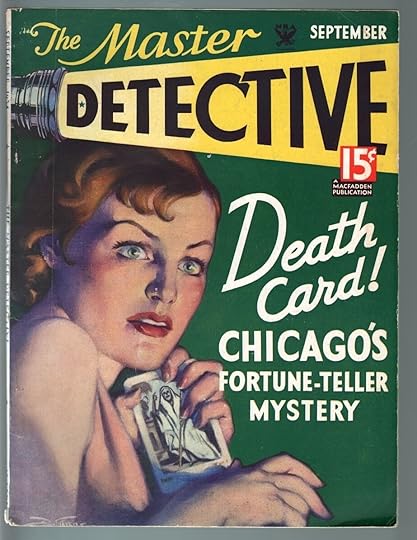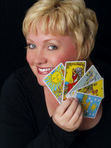The Writer’s Guide to the Death Card
The Death Card
Excerpted from Tarot for Writers by Corrine Kenner
Believe it or not, the Death card isn’t a bad omen. It’s not a portent of doom or imminent destruction. Instead, it’s a card of transition; it heralds the completion of one chapter of life, and the exciting new start of another.
The Death card almost never refers to an actual, physical death. In practical terms, it’s more likely to suggest a release, a change of form, a transformation, or the little deaths of sex and sleep.
When the Death card rears its ugly head in a tarot reading, it could also refer to a death that’s already transpired—especially if that passing has gone unnoticed or unacknowledged. It may call for the release of old habits, old patterns, and old relationships that have served their purpose and now should be relegated to the pages of history.
In a story reading, Death may represent a dead person, grieving survivor, health worker, hospice aide, medical examiner, mortician, or spiritual guide.
Key Symbols
Grim Reaper. Death is the proverbial pale rider on a white horse. He marches across the battlefield of life, mowing down all those in his path. He is the ultimate equalizer, a democratizing force, and he will eventually conquer the king, the bishop, the maiden, and the child alike.
Thermodynamics. According to the first law of thermodynamics, energy is never created or destroyed—it’s simply converted from one form to another. While the Death card does suggest an ending, it also promises a new beginning.
Don’t Pollute. Death has been this way before: the field is littered with body parts on their way to the recycling bin.
Dry Bones. The skeleton has always represented the bare bones of the matter.
Farm Tools. A scythe can only mean harvest, even if it refers to the harvest of souls.
Armored for Battle. Death wears armor of black steel, the familiar battle wear of a king’s knight. This warrior, however, has nothing to lose. He knows that his victory is inevitable.
Mystic Rose. Death carries a black banner emblazoned with a mystic white rose, a symbol of life and resurrection.
River Crossing. The small ship in the background is sailing on what seems to be the River Styx—the mythic landmark that separated the land of the living from the land of the dead.
Sunrise, Sunset. The rising and setting sun has symbolized death and resurrection since the time of ancient Egypt.
Passageways. The sun is stationed between two pillars that are reminiscent of the pillars behind the High Priestess, Justice, and the Moon. In every case, the pillars represent a gateway, or a passage to another world.
Numeric Significance. There are thirteen lunar months, or thirteen full moons, in every calendar year. Thirteen is sometimes thought to be an unlucky number, because there were thirteen diners at Jesus’ last supper. In the tarot, the Death card is number thirteen.
Keywords
Upright: Transition, transformation, rebirth, re-creation, regeneration, change, transformation, alteration, mortality, corruption, loss, failure, annihilation, destruction
Reversed: Destruction, corruption, loss, failure, annihilation, inertia, sleep, lethargy, loss of hope
Myth and Legend
The Death card, like all of the cards in the tarot deck, is an allegorical image. It’s probably based on similar images that were developed during the fourteenth century, when the Black Death swept across Europe. It suggests the danse macabre, the allegorical images of dancing skeletons that were generated as a result.
Even now, the black-robed figure reminds some people of the priests who perform last rites at the bedsides of those who are very ill. The Grim Reaper is also a variant on the ancient psychopomp, a conductor of souls.
The card also hints at the myth of the Phoenix, the mythical bird that burns and then is reborn from its own ashes. The bird is a symbol of destruction and purification by fire and subsequent rebirth from the ashes. It’s a metaphor for transformation and change, metamorphosis and rebirth. It doesn’t represent the loss of energy; instead, it symbolizes a conversion.
Astrological Associations
While most people fear death, those who are born under Scorpio’s influence are unafraid of darkness. In fact, they’re fascinated by the interconnected mysteries of death and sex.
Scorpio rules the eighth house of the zodiac chart, where astrologers look for information about sex, death, and other people’s money. Scorpio, in turn, is ruled by Pluto, the planet of death, regeneration, and unavoidable change. And on a related note, Pluto is assigned to the Judgment card.
Scorpio is a water sign.
Literary Archetypes
Death can embody any number of literary archetypes, including the destroyer, the fates, the gatekeeper, the guardian angel, the guide, the judge, the psychopomp, the shadow, the shaman, the sorcerer, the thief, and the trickster.
Death and Your Writing Practice
While most people dread the sight of the Death card in a tarot reading, writers tend to celebrate its appearance. That’s because the Death card can portend a dramatic shift in a story. It can introduce an element of danger: it’s dramatic and life altering.
As a writer, you are a type of psychopomp—a conductor of souls, and a guide to hidden worlds. No land is too dark or too frightening for you to explore.
On a practical note, the Death card can also remind you to eliminate words, phrases, scenes, and chapters that don’t move your story along. “To be a good writer,” Iris Murdoch said, “you have to kill your babies.” When the Death card falls in the course of your writing practice, it might be time to cull the herd.
Writing Prompts
Write about:
Someone who is on his deathbed
Someone who has died
Someone coming back from the dead
A killer
A psychopomp
The Grim Reaper
Life after death
Communication with the dead
A ghost
How your characters will die, even if their deaths have nothing to do with the story you’re developing
// ]]>




